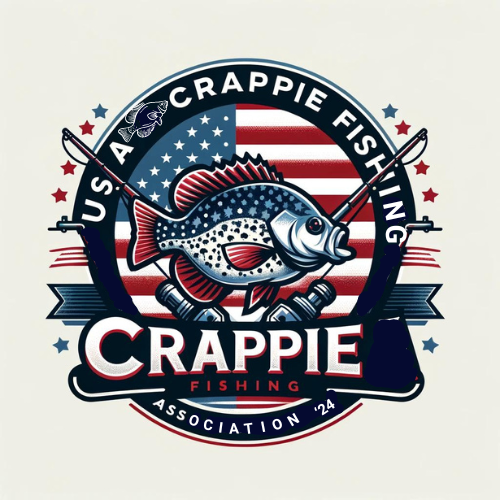“Fishing is much more than fish. It is the great occasion when we may return to the fine simplicity of our forefathers.” – Herbert Hoover
Crappie fishing is a beloved pastime that allows anglers to reconnect with nature and enjoy the thrill of a successful catch. Whether you’re an experienced angler or just starting out, understanding the techniques and strategies for catching crappie efficiently can significantly enhance your fishing experience. In this comprehensive guide, we will delve into the realm of crappie fishing, covering everything from locating their preferred habitats to choosing the right gear and baits. With these expert tips, you’ll be equipped with the knowledge to maximize your crappie fishing success and create lasting memories in the great outdoors.
Key Takeaways:
- Understanding the preferred habitats and behaviors of crappie can increase your chances of catching them consistently.
- Investing in the right gear, such as a limber rod, reel, and light line, is crucial for successful crappie fishing.
- There are various techniques that can be employed, including vertical jigging, trolling, casting, and more.
- Live bait, such as minnows or crickets, and artificial lures like crappie jigs or crankbaits can both be effective.
- Adapting your tactics based on the season and the preferences of the crappie is vital for success.
Where to Find Crappie
Crappie can be found in various bodies of water, making them a popular target for anglers. However, it’s important to understand that their location and behavior can vary depending on the season and environmental factors. To increase your chances of catching crappie consistently, it’s crucial to know where to find them.
Spring:
In the spring, crappie move towards shallow cover to feed and spawn. They can be found in lakes with vegetation, around grass edges and pockets. Additionally, they tend to gather around stumps and laydowns in lakes with wood cover. These areas provide the perfect habitat for crappie during their breeding season.
Summer:
During the summer, crappie may suspend shallow out over deep water. They can be found in the vicinity of submerged vegetation or around any structure that provides shade and protection from the sun. These structures can include docks, bridges, or even deep brush piles. When the weather gets hot, crappie seek shelter in cooler, deeper waters.
Fall:
In the fall, crappie may move back towards shallow cover as the water temperatures begin to drop. They can be found in similar areas as they would in the spring, such as around grass edges, pockets, stumps, and laydowns. As the vegetation starts to die back and the water cools down, crappie become more active and feed more aggressively.
Understanding the preferred habitat of crappie during different seasons can significantly improve your chances of finding and catching them. By targeting these specific areas, you can increase your success rate and make the most out of your fishing trips.
Crappie Fishing Gear
To effectively catch crappie, you will need a limber rod, a reel, light line, and the right bait. A spinning rod in a light to medium-light power and a length of 6 to 7 feet is commonly recommended. Spinning reels in sizes 1000 or 2000 make casting easier. It is also important to have the right baits, such as crappie jigs or live minnows. Additionally, having a depth finder or fish finder can be helpful in locating schools of crappie.
When it comes to crappie fishing gear, here are the essentials:
- Spinning Rod: A light to medium-light power spinning rod with a length of 6 to 7 feet is ideal for casting and sensitivity.
- Spinning Reel: Opt for a spinning reel in sizes 1000 or 2000 for smooth line retrieval and easy casting.
- Line: Choose a light line with a test strength of 4 to 8 pounds, as crappie have a relatively soft mouth.
- Baits: Crappie jigs in sizes 1/16 ounce or 1/32 ounce are popular choices. Live minnows, crickets, or worms are also effective baits.
- Depth Finder or Fish Finder: Utilizing a depth finder or fish finder can help you locate schools of crappie and identify the depth at which they’re swimming.
A well-balanced combination of crappie fishing gear is essential for a successful fishing experience. Investing in quality equipment will enhance your chances of landing more crappie and enjoying the sport to the fullest.
Tips for Choosing Crappie Jigs
When selecting crappie jigs, consider varying factors such as color, size, and action. Here are some tips:
- Color: Experiment with different color combinations, such as chartreuse, pink, or yellow, to determine which ones attract crappie the most. Monkey milk, a popular white and chartreuse combination, is often effective.
- Size: Crappie jigs in sizes 1/16 ounce or 1/32 ounce are commonly used. Smaller jigs are often preferred, especially when crappie are finicky or feeding on smaller prey.
- Action: Choose jigs with a lively and enticing action, such as those with soft plastic bodies that flutter in the water. This mimics the natural movement of prey and can entice crappie to strike.
Suggested Crappie Fishing Gear Setup
| Equipment | Recommendation |
|---|---|
| Rod | 6 to 7 feet spinning rod, light to medium-light power |
| Reel | Spinning reel (size 1000 or 2000) |
| Line | 4 to 8-pound test monofilament or fluorocarbon line |
| Baits | Crappie jigs (1/16 or 1/32 ounce) or live minnows |
| Depth Finder | Optional, but helpful for locating schools of crappie |
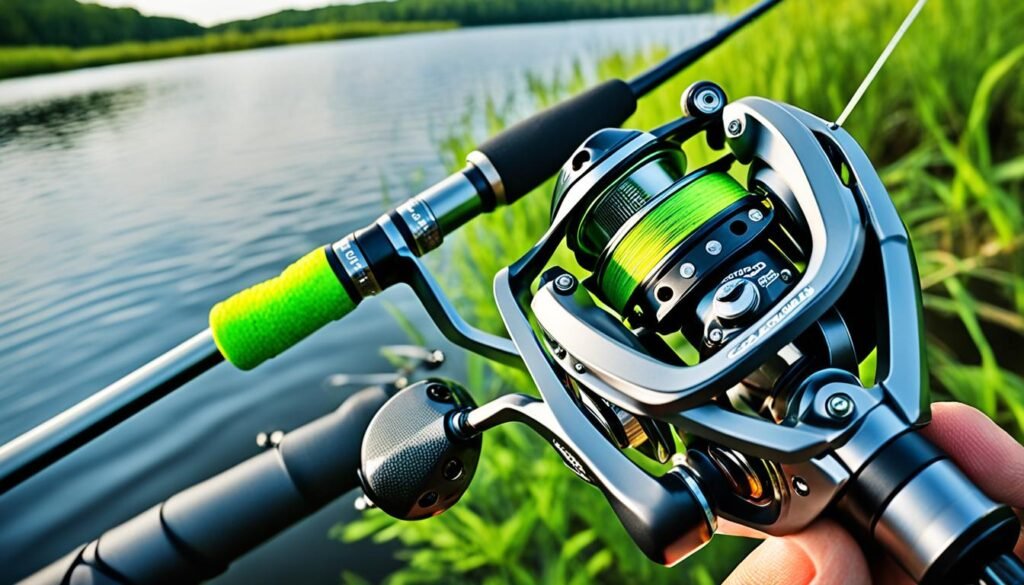
Effective Crappie Fishing Techniques
When it comes to crappie fishing, mastering the right techniques can make all the difference in your success rate. Here are some tried and tested methods to help you reel in those crappie:
1. Vertical Jigging
Vertical jigging is a versatile technique that works well year-round. It involves dropping your baited jig straight down into the water and giving it a subtle up and down motion to attract the attention of crappie lurking below.
2. Trolling
Trolling is an effective technique for covering more water in search of active crappie. It involves pulling multiple rods equipped with baits or lures behind a moving boat. Vary the speed and depth until you find the most productive combination.
3. Casting
Cast your line near shallow cover, such as submerged vegetation or brush piles, and retrieve it slowly with small jigs or lures. This technique mimics the movement of natural prey and entices crappie to strike.
4. Spider Rigging
Spider rigging, also known as pushing or pulling jigs, is a popular technique for targeting suspended crappie. It involves using multiple rods extended from the front of your boat, spread out like spider legs, to cover a wider area of water.
5. Shooting Docks
Shooting docks is a precise technique for fishing in tight spaces, such as marinas or boat slips. It involves skipping your lightweight jig or lure under the dock, allowing it to fall naturally and tempting crappie hiding in the shadows.
6. Pushing Jigs
Pushing jigs is another technique for navigating tight spaces, particularly in shallow water or around heavy cover. It involves using a long rod to push a jig through the water, imitating the movement of a small baitfish and triggering strikes.
Remember, crappie fishing often requires experimentation with different techniques. What works on one day or in one location may not work the next. Be adaptable and willing to try new approaches to find what works best for the conditions and the preferences of the crappie.
Best Baits for Crappie Fishing
When it comes to catching crappie, selecting the right bait can make all the difference. Anglers often debate the best baits for crappie fishing, but there are a few options that consistently prove effective. Whether you prefer live bait or artificial lures, there are choices to suit every angler’s style and preferences.
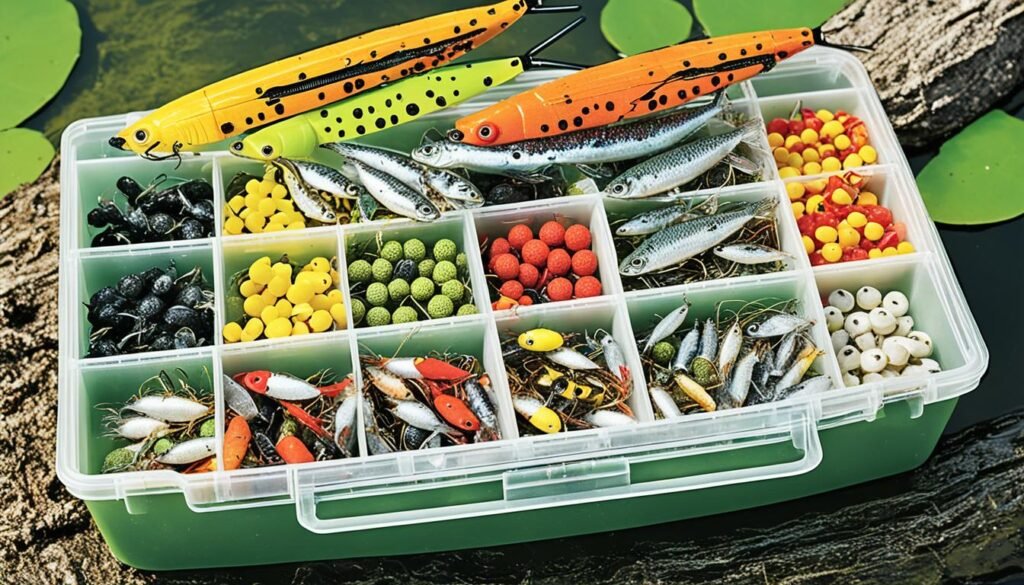
Live Bait
Live bait is a tried and true option for crappie fishing. Minnows and crickets are among the most popular choices. These lively baits mimic the natural prey of crappie, enticing them to strike. Using live bait allows you to present an irresistible meal to hungry crappie. Remember to check local regulations and obtain any necessary permits for using live bait.
Artificial Lures
If you prefer the convenience of artificial lures, there are plenty of options that can fool even the most discerning crappie. Crappie jigs and crankbaits are especially effective. Crappie jigs in sizes 1/16 ounce or 1/32 ounce are commonly used. These small jigs can be presented at various depths and can be tipped with bait, such as a minnow or a piece of worm, to enhance their appeal. When it comes to colors, monkey milk, chartreuse, and contrasted color combos are popular choices. Crankbaits, on the other hand, are ideal for attracting crappie in deeper water and can mimic the movements of their prey.
“The best baits for crappie fishing are often a matter of personal preference, but live bait such as minnows or crickets, and artificial lures like crappie jigs or crankbaits, consistently produce results.”
While these baits have proven successful for many anglers, it’s important to adapt your approach based on the specific conditions and the preferences of the crappie in your area. What works on one day may not work on the next, so be prepared to experiment with different baits and techniques to find what works best.
How to Fish for Crappie
When fishing for crappie, it is important to present your bait in a way that mimics their natural prey. This can involve various techniques and strategies to increase your chances of a successful catch.
1. Casting or Vertical Jigging near Cover
Casting or vertical jigging near cover can be an effective way to target crappie. Look for areas with submerged vegetation, stumps, or drop-offs where crappie are known to gather. Use lightweight jigs or bait that imitate small fish or insects, and vary your retrieval speed to entice strikes from these cautious fish.
2. Trolling through Likely Areas
Trolling is another popular technique for crappie fishing. Use a small crankbait or a combination of jigs and live bait to cover more water and increase your chances of finding active fish. Focus on areas where crappie are likely to be, such as channels, flats, or around submerged structures.
3. Using Bobber Rigs to Fish over Shallow Cover
Using bobber rigs can be an effective technique when crappie are feeding near the surface or in shallow cover. Attach a bobber to your line, set it at the desired depth, and use a small jig or live bait. This setup allows you to present your bait at the right depth consistently and keep it in the strike zone for longer.
4. Varying Retrieval Speed and Using Different Jigging Techniques
Crappie can be selective and finicky at times, so it’s essential to experiment with different jigging techniques and retrieval speeds. Some days, crappie may prefer a slow and subtle presentation, while on other days, they may respond better to faster and more aggressive movements. Pay attention to their feeding behavior and adjust your tactics accordingly.
Remember, crappie are highly adaptable, and their behavior can change depending on factors such as weather, water conditions, and the time of year. Stay observant and be willing to adjust your approach to maximize your chances of success.
| Advantages | Disadvantages |
|---|---|
| Allows you to cover a large area of water | Requires knowledge of the areas where crappie are likely to be |
| Offers the opportunity to target active fish | May result in more encounters with non-target species |
| Enables you to experiment with different depths and presentations | Requires proper equipment and knowledge of trolling techniques |
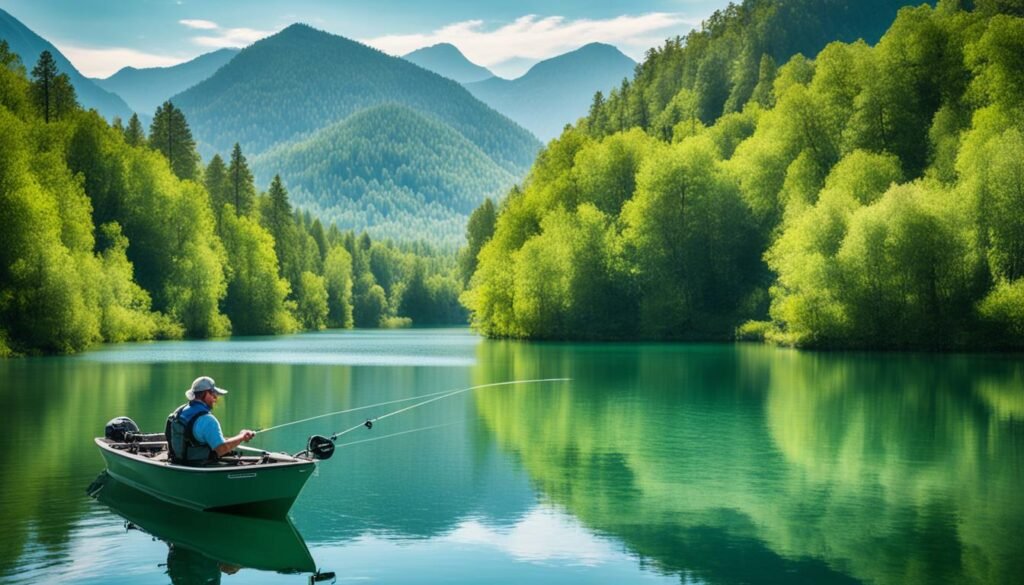
“To catch more crappie, you need to think like a crappie. Study their behavior, understand their preferences, and adapt your fishing techniques accordingly.” – Expert Angler
Tips for Catching Crappie in Different Seasons
Crappie fishing techniques can vary depending on the season. By adjusting your tactics and bait selection based on the time of year, you can significantly improve your chances of success. Here are some tips for catching crappie in each season:
Spring:
In the spring, crappie move towards shallow water to spawn, making them more accessible for anglers. Look for areas with submerged vegetation, such as grass edges and pockets. They also seek cover around stumps and laydowns in lakes with wood cover. Use small crappie jigs or live minnows as bait to attract their attention and trigger bites.
Summer:
During the summer, crappie can be found near submerged vegetation or suspended in open water. Use a depth finder or fish finder to locate schools of crappie. Casting small jigs or using bobber rigs with live minnows can be effective in enticing them to bite. Experiment with retrieval speeds and jigging techniques to find what works best for the conditions.
Fall:
In the fall, crappie may move back towards shallower cover. Look for areas with stumps, laydowns, or grass edges where they might seek shelter and food. Crappie jigs and live minnows can be productive during this time. Vary your presentation by adjusting the depth and speed of your bait to find where the crappie are actively feeding.
Winter:
During the winter, crappie tend to suspend over deep water. Use a depth finder or fish finder to locate schools of crappie at different depths. Vertical jigging with small jigs or using live minnows near their suspended level can entice them to bite. Patience is key during this season, as crappie may be less active and require a slower presentation.
| Season | Tactics | Bait |
|---|---|---|
| Spring | Target shallow areas near vegetation or cover | Crappie jigs, live minnows |
| Summer | Locate crappie near submerged vegetation or open water | Small jigs, live minnows |
| Fall | Search for crappie around shallow cover | Crappie jigs, live minnows |
| Winter | Suspend bait to target crappie in deep water | Small jigs, live minnows |
Crappie Q&A
Here are some common questions and answers about crappie fishing:
-
What is the biggest crappie ever caught?
The biggest crappie ever caught was landed in Tennessee in 2018. -
Do crappie prefer live bait or lures?
Crappie can be caught using both live bait and artificial lures. It is a matter of personal preference and what is most effective for the specific conditions and the preferences of the crappie. -
What is the best time of day to catch crappie?
Crappie are most active during low-light conditions, such as dawn and dusk. However, they can be caught throughout the day, especially when they are in their feeding patterns.
Now that we’ve answered some commonly asked questions about crappie fishing, let’s delve into effective crappie fishing tactics to help you catch these elusive fish.
Crappie Fishing Tactics
Successful crappie fishing requires a combination of tactics that encompass various aspects of the sport. These tactics include:
- Locating their preferred habitat: Understanding where crappie prefer to hide and feed is essential. Look for areas with submerged vegetation, stumps, laydowns, or drop-offs.
- Using the right gear: Having the appropriate fishing gear is crucial. A limber rod, spinning reel, light line, and depth finder or fish finder can greatly enhance your chances of success.
- Implementing effective techniques: Different techniques can be employed depending on the conditions and the preferences of the crappie. Vertical jigging, trolling, casting, spider rigging, shooting docks, and pushing jigs are all effective methods.
- Selecting the best baits: Experimenting with different baits is key to figuring out what works best. Crappie jigs, live minnows, crickets, and crankbaits are all popular options.
Adapting to the specific conditions and the preferences of the crappie is crucial, as these factors can vary depending on the body of water and the season. By understanding the habits and behavior of crappie, anglers can increase their chances of consistently catching these elusive fish.
Remember, successful crappie fishing lies in the combination of tactics that optimize your chances of getting a bite. Now, let’s dig deeper into each of these tactics and explore how you can maximize your crappie fishing success.
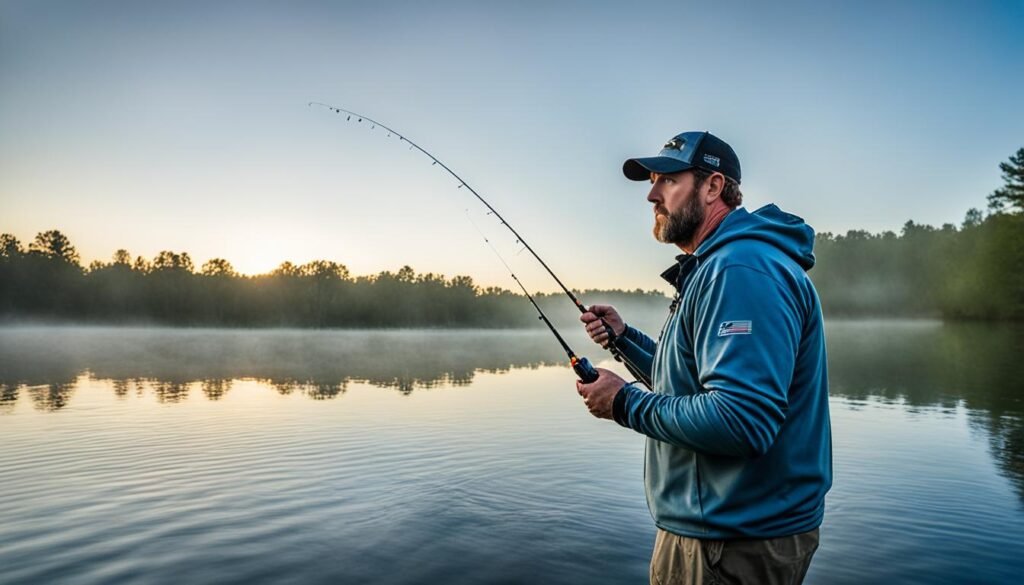
Conclusion
Crappie fishing can be a challenging yet rewarding experience. By implementing these expert tips and techniques, you can enhance your ability to catch crappie efficiently. It is crucial to consider factors such as the season, habitat, and behavior of crappie, and adapt your tactics and bait selection accordingly.
With patience, practice, and a little bit of luck, you can become a successful crappie angler. Take the time to understand the preferred habitat of crappie and the techniques that work best in different seasons. Use the right gear, such as a limber rod, reel, light line, and the appropriate baits, such as crappie jigs or live minnows.
Keep in mind that crappie are often found near submerged vegetation, stumps, or drop-offs. Target these areas when presenting your bait to mimic the natural prey of crappie. Experiment with various retrieval speeds and jigging techniques to entice reluctant bites. By honing your skills and knowledge, you’ll increase your chances of reeling in crappie and enjoying the thrill of a successful catch.
So, grab your fishing gear, head to your favorite fishing spot, and apply these tips and tricks. Remember, practice makes perfect, and with dedication, you’ll soon become an adept crappie angler. Good luck and happy fishing!
